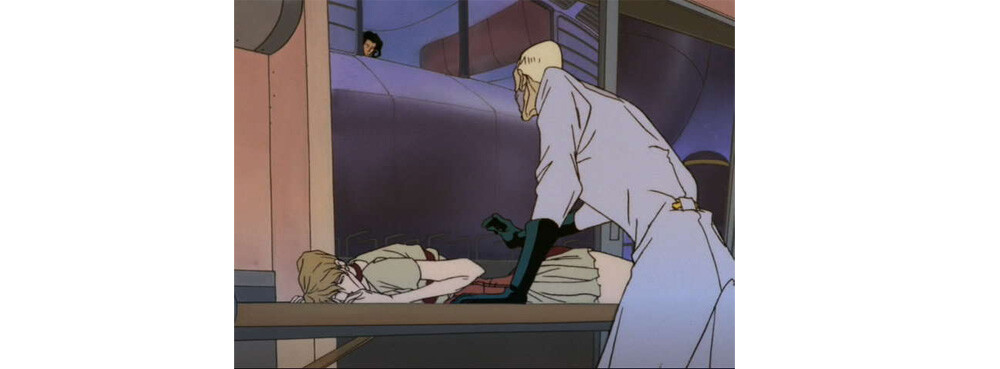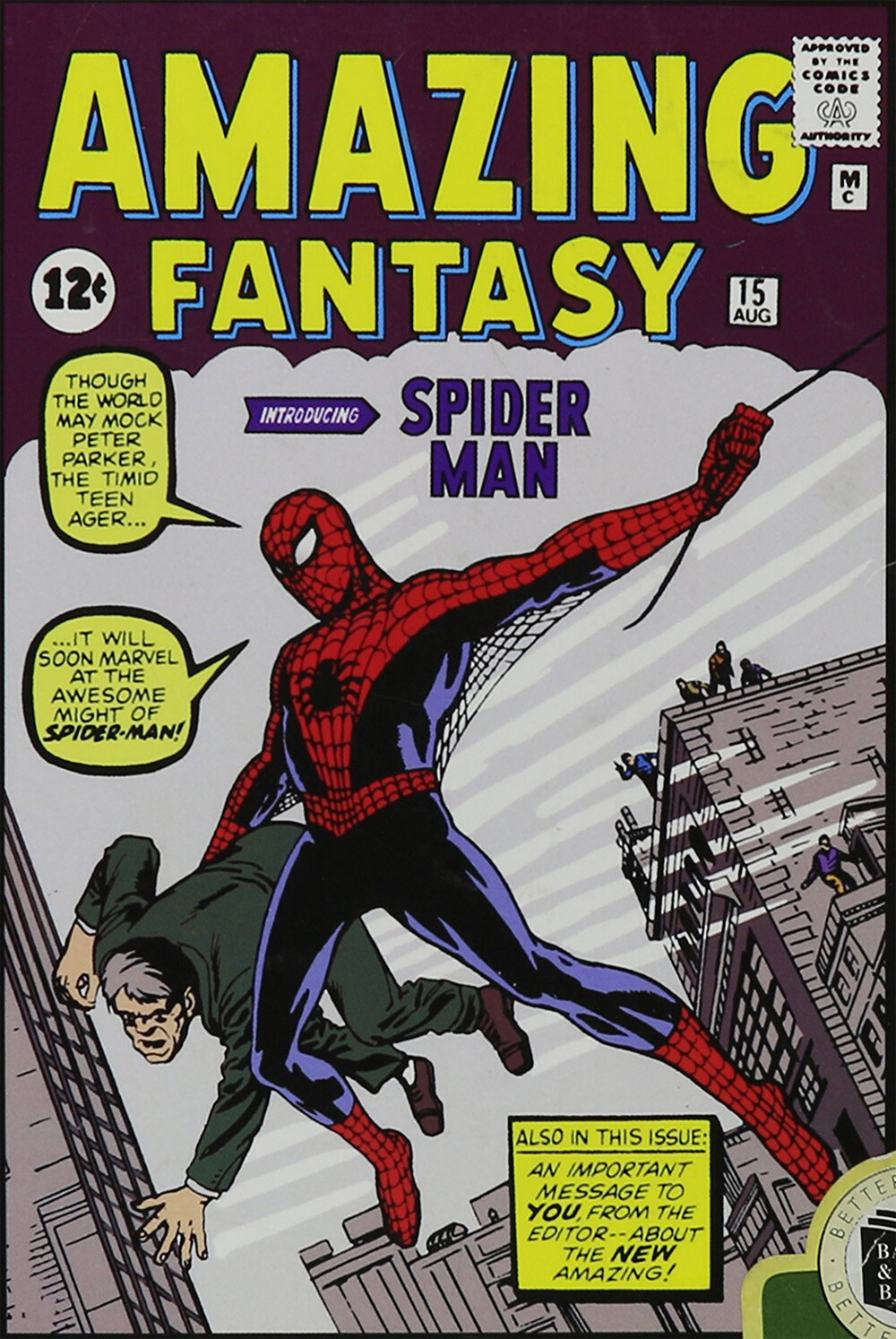6 Famous Cartoon Characters That Started Out In The Weirdest Places

Where do our favorite shows come from? From the dreams of writers? The cocaine-fueled nightmares of producers? From books, from comics? Sometimes though, they come from something worse—from other TV shows. The dreaded backdoor pilot. "The Farm" episode of The Office, the one episode of Supernatural that was set in Chicago that no one remembers.
Most backdoor pilots are lambasted before they even air, a cheap way to try and nudge current viewers towards a new show without even letting them see what it is. But some backdoor pilots are better than others ...
Beavis And Butt-Head And Æon Flux Came From The Same Anthology Show
Don't Miss
Beavis and Butt-Head was a cartoon show that formed the basis for every terrible impression any teenager did in the '90s. It had two idiot kids who somehow weren't constantly smoking weed yet talked about nachos and music videos non-stop. They were like if Statler and Waldorf were your pyromaniac cousin fueled entirely by Mountain Dew. Meanwhile, Æon Flux is a sci-fi show about a hot super-spy whose body moves in weird ways and a revolutionary sexual process that later became a reality involving spinal surgery replicating orgasms.

MTV
And yet both were born from the same terrible, terrible well. MTV, back before it became the host of reality shows, and after it was a place that actually played music, was the place to be for adult cartoons, like Adult Swim meets Toonami, but hornier. Back then, there was a show called Liquid Television – a series of short animated specials *for adults*.
It was the mother of multiple MTV shows, including both Beavis and Butt-Head and Æon Flux, which kind of summed up MTV's television offering: impossible, anime-esque serial science fiction and what Kevin Smith would write while half-asleep and drunk. Beavis and Butt-Head went on to become the juggernaut it was, launching Mike Judge's career before he went on to Office Space, King of the Hill, and Idiococracy; meanwhile, Æon Flux uh ... Well, there was a movie best known for featuring Charlize Theron wearing spandex (and nearly getting paralyzed).

Paramount Pictures
Some other hit Liquid Television shorts include The Honkey Problem starring Inbred Jed and the Little Bottom Boys, Smart Talk with Raisin (which featured an early version of Courage the Cowardly Dog), and The Art School Girls of Doom, a slice of life live-action comedy series about drag queens. Which, to be honest, sounds like it would've been better than live-action Æon Flux.
SpongeBob Squarepants Was From An Actual Marine Institute
So, who lives in a pineapple under the sea? He's yellow and porous and absorbent. He's SpongeBob Squarepants, and he's one of Nickelodeon's most popular and well-known icons, who has a continuing movie and TV series franchise, including a prequel … Despite how much his creator, Stephen Hillenburg, despised that idea, but he's dead now, so execs don't care!
Hillenburg made him not to be an everlasting symbol of a corporation sucking your childhood dry (hard to do given he's a sponge) but as an informational little blob that accompanied pamphlets at the Orange County Marine Institute. Before he descended to Bikini Bottom, SpongeBob could be found on the informational pamphlets at the OCMI where Hillenburg worked. He was originally known as Bob the Sponge, which was shortened to SpongeBob because companies believe children can't understand complete sentences.

Nickelodeon
The comic given was to children, so they didn't need to read boring plaques or listen to droning voices. Bob also looked completely different—still spongey, but he had much more of a sick, cool, shaka-brah vibe to him. Even with his hopelessly outdated '90s-era glasses, he looked cooler than the suspender-sporting sponge we eventually got.

Hillenburg attempted to sell a Bob the Sponge comic in '89 before failing and going on to Cal Arts, after which he was hired to work on Rocko's Modern Life. There, his comic was seen by coworkers who rightfully went, "Hey, idiot, make this thing." Even though SpongeBob eventually became a media legend, Hillenburg still hoped that he could inspire people to love the ocean and all its creatures. And he did. R.I.P.
Super Friends, Where Are You?
In this age of Marvel's time-bending live-action films and DC's R-rated AUs, it's easy to forget how pure and simple comic book heroes could sometimes be. And nothing represents that joy and simplicity better than the Super Friends. Super Friends is one of the more popular versions of the Justice League. It has the Wonder Twins, the Hall of Justice, a slice of racism, and the same terrible animation you'd expect to see in early Scooby-Doo episodes. Which makes sense, as Super Friends first appeared on Scooby-Doo.
While that's not that weird for superheroes to show up on Scooby-Doo – Abbott and Costello, Johnny Bravo, and Harlan Ellison have all met the talking weed dog – it is noteworthy that one of the first cartoon adaptations of Batman debuted as a backdoor pilot on the doggie detective show.

Hanna-Barbara
A year before Super Friends aired, their version of Caped Crusader and his horrible little teen smurf appeared in the New Scooby-Doo Movies, then took off to find their own friends at the Union Terminal in Cincinnati.
Tracy Ullman's Lovely Yellow Family
The Simpsons will live past the time your name is forgotten. They are movies, theme parks, snack food, chains, video games, toys, and unfathomable hours of television. It would be easier to turn yourself into a yellow, spike-headed hooligan than to consume all of The Simpsons. Which is why it's even more amazing that it wasn't even an original show. Like Supernatural's Wayward Sisters or Smallville's Aquaman, the Simpsons first appeared on another show before continuing on to fame and stardom.

WB
Before becoming an animation juggernaut that would inspire thousands of copycats, none of who could ever manage the creativity or confidence of the original, The Simpsons were small filler bits that played on The Tracey Ullman Show. They were the "We'll Be Right Back!" of the show, playing between the show and the commercials.
And they were weird. Each bit being seconds long, esoteric, dreamy, before eventually portraying a rich inner life of this weird, awful family ... despite this being how it all started.
Eventually, Matt Groening would go on to pitch the Simpsons to Fox, but before then, they were just the bumpers that played between a pop singer discussing the difference between Americans and Brits and commercials for fiber cereal and weird '80s sodas.
Spider-Man's Amazing Fantasy
Spider-Man is one of the most popular superheroes ever. The story of Peter Parker, the down-on-his-luck photographer/reporter/scientist, balancing his melodramatic home life and over-the-top superhero life hit a chord in audiences that almost nothing had up to that point. He was a teenager but not a sidekick. He was selfish and failed, but he wasn't a villain. His whole motif came from a terrifying arachnid, but he wasn't an EC Comics horror character. He was an enigma, a rarity in comics, which was filled with big-muscled, massive-chinned ultramen who could punch buildings in half and leap over locomotives. He was something new, and he almost didn't exist.
Amazing (Adult) Fantasy was an anthology series about weird sci-fi and fantasy stories like "The Terror of Tim Boo Ba!" and "The Coming Of The Krills!", but due to flagging sales, it was heading out the door. Since it was about to be gone anyway, Stan Lee decided he could burn the last issue with an unmarketable, unprofitable character that he couldn't get out of his mind. He enlisted one of the odder comic artists of the time and crafted a story about a monstrous teen who doesn't stop a robbery, leading to his uncle dying.

Marvel
Unlike some of the others on this list, Spider-Man wasn't a throw-off -- he was specifically a middle finger, written and made specifically with the idea that it wouldn't sell, but it was a good idea anyway.
Scott Pilgrim's Happy Little Comic Strip
Scott Pilgrim is the movie that ruined Metric, bass guitars, and all movie commentary for seven years. It was a blockbuster hit mixing video games, music videos, style, substance, and a lesbian for good measure. The film was based on is a six-volume series by Bryan Lee O'Malley about Scott Pilgrim and his battle with the exes that was published piece by piece for years, but the story starts well before that in the webcomic Style, which ... great name, Bry.
The series was a small, short webcomic that O'Malley didn't make for that long while he was working on Lost at Sea, one of his early graphic novels, but despite its close proximity to that book, it was the genesis of Scott Pilgrim. The series functions almost like a very small, mostly unconnected prequel to the comic, showing the life of Kim Pine before Scott Pilgrim came crashing in.

The series continued for a few strips on the Oni Press website before Kim eventually upgraded to comic series and eventual starring role in the film and playable character in the game. All from a small webcomic that Bryan Lee O'Malley wrote for like a week in the '90s.
Top Image: Paramount Television